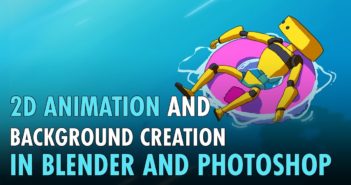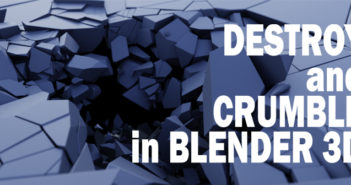With the milestone release of Blender 3.0 just entering beta stage, Blender Foundation Chairman Ton Roosendaal takes this opportunity to release a massive post on the Blender Code Blog outlining the proposed roadmap for the ground-breaking 3.x series.
What will everyone at https://t.co/CiYDUHdQrP be working on in the coming years? Read the Blender 3.x roadmap proposal by Ton Roosendaal. Exciting times ahead! #b3d https://t.co/mODSCCLEK7
— Blender ? (@Blender) October 28, 2021
The Blog post starts with a bit of Blender history to reframe and put into perspective the importance of this release: Blender 2.0 was announced at Siggraph in August 2000, meaning that the tenure of the venerable 2.x series will come to a close after more than 20 years! Moving forward, the release numbering system has been updated, with one major release expected every 2 years, peppered with 8 ".x" releases during this cycle, two of which are LTS versions. Here is a link explaining blender's new versioning system.
Above and Beyond
The global vision outlined in the article is to cement the direction and momentum established with the 2.8 via meticulous documentation and clear design paradigms, and make what works work even better. The rest of the post reads like a wish-list bound to make all CG and VFX artists excited for the future of Open Source content creation spearheaded by Blender, with a re-affirmation of its mission statement:
We make the world’s best 3D technology available as open source tools for artists, or for short, the Freedom to Create.
What the future holds
While I heavily recommend checking out the post and engaging in the discussion about the future of Blender, I'll highlight here some of the elements that stood out to me:
- In the modelling department, among further fine-tuning and expansion of the toolset, development will also be allocated to improve performance and the ability to handle massive datasets
- An acknowledgement of the need to upgrade Blender's procedural texturing workflow, with the design for the move still being open to discussion.
- The revival of the Animation 2020 project in 2022, with the following keywords pushing the vision forward: node based, layering, debugging tools, speed, crowds, mocap support, automated systems for muscles and physics.
- Planned for a beta rollout in Blender 3.1, Blender Application Templates or Blender Apps for short will allow the creation of completely customizable UI and Blender-based apps using python scripting straight in the .blend file.
- After the success of Geometry Nodes, push forward with the Everything Nodes project, next on the list being the implementation of node-based physics and solvers.
- A complete Vulkan re-write of Eevee with a Screen Space Global Illumination implementation, and a potential real-time ray-tracing update as well. This re-write is part of a massive overhaul of the viewport, with the development of the exciting real-time compositor making use of Eevee's newfound powers.
- A "real-time" mode to decouple simulations and animations from frame playback, which will be a huge design task but would work incredibly well with the other planned changes.
- A new module, "Blender Meta", which will be an optional link between Blender and the internet, for example, to enable the implementation of automatic updates of Blender and its addons, browsing the upcoming asset libraries, and more.
Check out the post on the link below for more details and an exhaustive list of all the exciting developments for Blender's 3.x series:




1 Comment
Blender meta. Sounds fun!